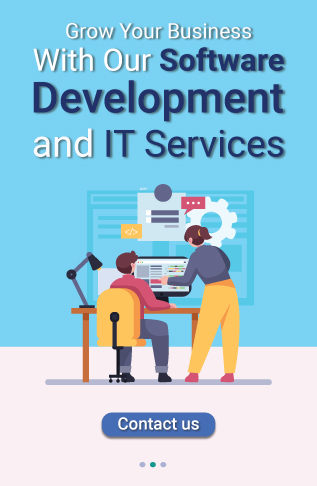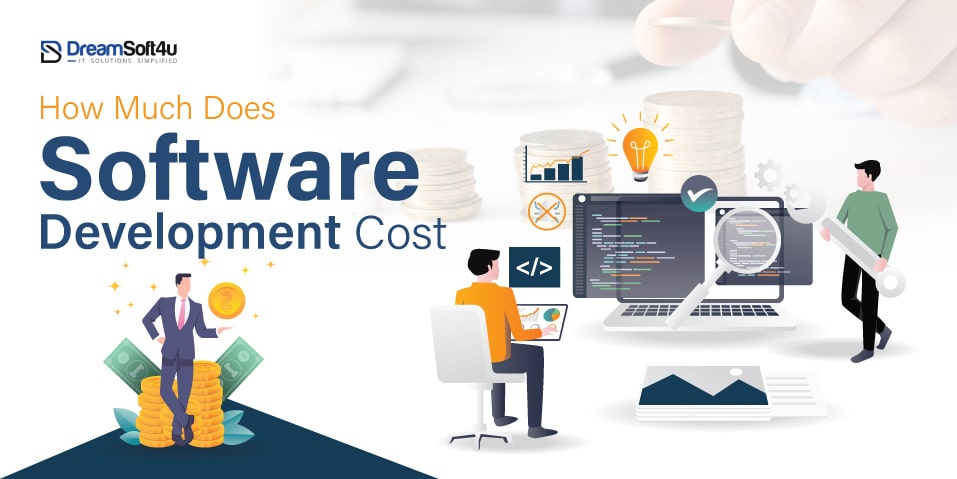The buzz around AI is now much louder than ever, and the reason is these two terms: Generative AI vs LLM. Those businesses constantly looking for ways to use AI in their industry have heard about these technologies frequently and seen how they are driving the AI revolution. They might sound similar, but they are not the same. Each has its unique use cases and functions.
Generative AI is a broad category of AI that can create new content like images, videos, code, and more. On the other hand, LLMs are a specific type of Generative AI. It focuses only on understanding and generating human language.
While both generate content, every business needs to understand the vast difference in its approaches before implementing its business.
That is why this blog will cover everything about Generative AI and Language Models, the key differences between them, their advantages and limitations, and their future scope.
By the end of this guide, you will know exactly which technology to choose for your business.
Table of Contents
ToggleWhat is Generative AI?
Generative AI is a type of artificial intelligence that can create original content like text, images, videos, music, and more based on what it has learned from real examples.
Instead of just analyzing data, it produces something new. It studies huge amounts of existing content, understands patterns (like how people write or design), and then generates fresh, human-like results — whether it’s a blog post, a song, or a digital image.
Some popular tools built on Generative AI include:
- DALL·E – turns your text into images.
- Midjourney – creates artistic visuals.
- Claude – helps with writing and conversations.
Key Features of Generative AI
Here are some key features of Generative AI:
- Diverse Content Generation: Generative AI isn’t limited to just text. It can also make images, videos, audio clips, and even 3D models. This makes it useful for everything from marketing and design to product demos and social media.
- Pattern Recognition: Rather than simply copying information, Generative AI learns from large datasets. It recognizes patterns in writing styles, visuals, and sounds and then uses that knowledge to generate original content that feels natural and contextually accurate.
- Adaptive Learning: Generative AI is highly responsive to input. Whether you need a more casual tone, shorter length, or a formal structure, it adjusts its output based on your instructions — making it feel like a flexible, responsive collaborator.
- Natural Language Understanding: Thanks to advanced natural language processing (NLP), Generative AI can understand and respond to human language. This capability makes it ideal for chatbots, AI writing tools, and customer-facing virtual assistants.
- Creative Assistance: Generative AI serves as a powerful brainstorming tool. Provide a simple idea or a rough outline, and it can generate multiple versions or suggestions, which helps teams explore creative directions more efficiently.
- Personalization: Generative AI can tailor content based on user behaviour, preferences, or past interactions. This enables businesses to deliver personalized emails, targeted product recommendations, and more relevant ad content at scale.
- Scalability: Whether you’re a solo creator or a large enterprise, Generative AI can consistently produce high-quality content at scale. It helps teams stay productive, maintain brand voice, and meet tight deadlines.
Types of Gen AI Mode

Generative AI uses different types of models, each built to create content in its unique way. Here are the most common ones and what they do:
1. GANs (Generative Adversarial Networks)
These models generate realistic images by using two systems — one creates the picture, and the other tries to detect if it’s fake. Over time, the results get better and more natural-looking.
2. Diffusion Models
Diffusion models start by adding noise to an image and then learn to reverse it to create something new. They’re now the top choice for generating detailed visuals from text prompts.
3. Transformer Models
Transformers are language experts. They understand and write text by analyzing all the words in a sentence together. This helps them write, summarize, or answer questions.
4. Neural Radiance Fields
NeRFs are models that work to convert 2D photographs into 3D scenes. Give this model a few photos of an object taken from different angles, and it can build a 3D version of that object.
5. Variational Autoencoders
These models compress and then recreate data like images or music to make new, similar versions.
6. Autoregressive Models
Autoregressive models build content one piece at a time — one word after another or one note after another. That’s what makes their output feel smooth and natural. They’re used in GPT-3 and GPT-4.
7. Flow Models
Flow models turn simple input (like random numbers) into complex content, and they can reverse that, too. They’re helpful when you need very controlled and accurate outputs.
Best For: Scientific visuals, audio creation, and high-precision tasks.
What are Large Language Models?
Large Language Models (LLMs) are a type of AI that works with text. They read and learn from vast amounts of written content, like books, websites, and articles.
Their job is to understand language and create text that sounds natural. LLMs are not used to make images or videos. They focus only on words. You can use them to:
- Answer questions
- Write emails or blog posts
- Translate between languages
- Summarize long content
- Power chatbots and virtual assistants
Popular LLMs like GPT-4 and LLaMA are trained to understand how people write and speak. That’s why they’re used in tools for writing, customer support, education, and more.
Key Features of Large Language Models (LLMs)
Here are some of the most essential features of LLMs:
- Text Generation: LLMs are great at generating written content. Whether you need a blog post, a summary, an email, a short story, or even some code, you give it a prompt, and it writes something that sounds like it came from a real person.
- Natural Language Understanding: These models don’t just spit out words. They’re trained to understand tone, grammar, meaning, and even subtle things like sarcasm or emotion. That’s what makes their responses feel natural.
- In-Context Learning: One of the best parts? You don’t have to teach them everything from scratch. Just give a few examples or show the format you want, and they’ll follow it. This ability to learn from your prompt is what’s known as in-context learning.
- Emergent Abilities: As they get trained on more data, LLMs often pick up skills you didn’t plan for, like solving problems, organizing ideas, or even summarizing complex information with clarity.
- Multimodal Capability: Advanced models like GPT-4 can also work with visuals. That means they can look at an image or chart and respond to it, which is especially helpful in fields like healthcare, education, and product design.
- Fine-tuning for Specific Tasks: Need an AI that understands legal terms or medical details? LLMs can be fine-tuned for different industries, making their responses more accurate and relevant.
- Prompt Sensitivity (Prompt Engineering): LLMs are very sensitive to how a prompt is written. A slight change in your wording can lead to very different results. That’s why learning how to write effective prompts, also called prompt engineering, is becoming an essential skill.
Types of Large Language Models

Large Language Models come in different types, each built for a specific kind of task. Here are some common types:
1. Autoregressive Models
Autoregressive models generate text one word at a time, always predicting what should come next. This step-by-step approach helps them produce smooth, natural sentences. They’re widely used for writing, completing text, and answering questions. GPT-3 and GPT-4 are great examples.
2. Instruction-Tuned Models
They are designed to follow precise instructions, and these models respond directly to what you ask. You can tell them to summarize a report, write a product review, or create a blog post. They’re handy for business content and task automation.
3. Dialog-Tuned Models
Built for conversations, these models are trained to give friendly, natural replies in a chat format. They’re often used in virtual assistants, customer support bots, and interactive chat platforms like ChatGPT.
4. Fine-Tuned or Domain-Specific Models
These models start with general training but are later specialized in a specific area like law, medicine, or finance. That extra training makes them much better at understanding and responding accurately within that field.
5. Multimodal Models
Unlike standard LLMs that only work with text, multimodal models can understand other inputs, too, like images or audio. For example, you can upload a chart or photo and ask questions about it. This makes them useful in education, design, and healthcare.
6. Zero-Shot and Few-Shot Models
Even without prior training on a specific task, these models can still try to perform it based on your prompt. A few examples (or none at all) are enough to guide them. This makes them flexible for handling new or custom tasks on the fly.
7. Language Representation Models
Rather than generating long answers, these models focus on analyzing and organizing text. They help with things like searching, grouping similar content, and improving recommendations. You’ll often find them behind innovative search tools or content filters.
How Do LLMs and GenAI Work Together?
LLMs and Generative AI work together like a team. The LLM writes the text like a message, an article, or a script. Then, a Generative AI agent takes that text and creates something visual from it, like an image, video, or design.
In simple words, one handles the words, and the other brings those words to life. This teamwork allows businesses to create complete, personalized content quickly and efficiently.
For Example, In marketing, First, the content is written by LLM, like a catchy headline, ad copy, or video script. Then, Generative AI creates matching visuals, such as social media images or promotional videos, based on that text.
Generative AI vs LLM: Quick Comparison
Here is a quick comparison between Generative AI vs LLM:
| Feature | Generativ AI | Large Language Models |
| Primary Function | Creates a wide range of new content types (text, images, audio, video, etc.) | Generates and understands human-like text |
| Scope | Multimodal – works with multiple formats like images, video, and sound | Text-focused – works only with written language |
| Data Usage | Trained on mixed data: text, images, audio, and videos | Trained mainly on large volumes of text data |
| Technology | Uses GANs, VAEs, diffusion models, and transformers | Built on transformer models like GPT, BERT, and LLaMA |
| Examples | DALL·E, Midjourney, Runway ML, Synthesia | ChatGPT (GPT-4), Claude, Google Gemini, LLaMA |
| Applications | Art creation, video generation, product design, gaming, content marketing | Content writing, coding assistance, customer support, translation, summarization |
| Ethical concerns | Deep fakes, copyright misuse, biased visuals, synthetic media manipulation | Misinformation, biased language, data misuse, academic dishonesty |
Generative AI vs LLM: Top Use Cases in 2025
Here are real-world use cases of Generative AI vs LLM:
Generative AI
- Fashion Design: Designers use AI to create digital versions of clothes. It helps them test ideas quickly without using fabric or making real samples.
- Architecture: Architects use AI to draw building layouts, floor plans, and 3D models. This helps them explore more designs in less time.
- Product Design: AI can suggest different versions of a product based on your inputs. It speeds up how fast new products are created.
- Gaming: Game developers use AI in software development to build characters, stories, and game levels automatically. It makes games more creative and fun to play.
- Film Production: Filmmakers use AI to edit scenes, add effects, and test camera angles. It saves time and gives them more creative options.
- Healthcare: Doctors use AI to study large amounts of medical data. It helps with finding new treatments and creating better care plans.
- E-Commerce: Online stores use AI for features like virtual try-ons and innovative product suggestions, making shopping easier and more personal.
Large Language Models (LLMs)
- Customer Support: LLMs help run chatbots that answer customer questions instantly. This gives users quick help without waiting for a human agent.
- Education: AI tutors use LLMs to explain topics clearly, answer student questions, and create study materials based on each learner’s needs.
- Healthcare: Doctors use LLMs to write medical notes faster and summarize patient information so they can spend more time with patients.
- Legal Services: LLMs help lawyers quickly read and summarize long contracts or legal documents, saving time and reducing errors.
- Business Intelligence: Companies use LLMs to turn complex data into short, easy-to-read summaries. This helps leaders make smart decisions quickly.
- Journalism: Reporters use LLMs to organize notes, summarize events, and draft articles faster, making their writing process more efficient.
- Software Development: Developers use LLMs to write code, fix errors, and document software. Which helps them work faster and with fewer mistakes.
Generative AI vs LLM: How to Choose the Right One for Your Business?
When deciding between Generative AI vs LLM, the right choice depends on your content needs, available data, technical resources, and project goals. Here is a practical breakdown to help you make the right decision:
1. Type of Content
If your project involves creating various content formats such as images, music, video, or designs, then Generative AI offers the flexibility and tools needed for those creative outputs.
However, if your focus is strictly on language-based tasks like writing, translation, or text summarization, then LLMs are the more specialized and efficient choice.
2. Data Availability
Generative AI requires access to high-quality, diverse datasets that match the content it is expected to generate. For example, training an AI to create realistic visuals demands a rich dataset of images.
LLMs, in contrast, are built to work with large volumes of text. If you already have access to well-organized textual data, an LLM will be much easier to train or fine-tune.
3. Task Complexity
Choose Generative AI if your project involves complex, multi-format content creation or demands highly creative and original outputs.
Use LLMs for tasks that require a deeper understanding of language, such as providing detailed written responses, generating structured content, or analyzing textual data.
4. Resource Requirements
Generative AI models, especially those handling visuals and multimedia, often demand more computing power, storage, and processing time.
LLMs, particularly pre-trained models, tend to be lighter and more efficient—ideal for environments with limited technical infrastructure focused solely on text.
5. Quality of Training Data
Generative AI depends on well-labelled, diverse data from multiple formats to perform well. Its output is only as creative and relevant as the data it is trained on.
LLMs benefit most from clean, high-volume textual data. Even without multimodal input, a robust language dataset allows them to generate accurate and human-like text responses.
6. Development Expertise
Generative AI development services, including the development or fine-tuning of Generative AI systems, generally require more technical knowledge, especially in machine learning, data processing, and content-specific modelling.
On the other hand, LLMs are more accessible. Many AI tools come pre-trained and can be used effectively with minimal machine learning expertise, making them ideal for businesses starting with AI.
Want to utilize AI’s full potential in your business?
We have a team of AI professionals who offer end-to-end AI solutions to give you a competitive edge.
Conclusion
Choosing between Generative AI vs LLM depends on what you need. Generative AI is great for creating different types of content, like images, audio, or video. LLMs, however, are best for understanding or writing text.
Knowing how each technology works helps you pick the right one for your project. We hope this guide lets you understand each technology, its key differences, and its use cases.
Now, it is your turn to choose the right technology for your business needs and grow your business. Still confused? It is better to consult with an experienced AI development company like DreamSoft4U and let a professional help you with end-to-end AI solutions. Contact us today.
FAQs
1. What is the difference between Generative AI vs LLM?
Generative AI generates all kinds of media—text, images, video, audio, and others. LLMs are one type of Generative AI, but only text-based Generative AI.
2. Are LLMs generative AI?
Yes. LLMs are a type of generative AI that can only understand and generate text.
3. What are the top LLMs in 2025?
In 2025, the top four LLMs will be GPT-4, Claude 3, Google Gemini, and LLaMA 3. Each one excels in something like speed, accuracy, or safety.
4. How do Generative AI and LLMs differ yet complement each other?
LLMs generate the text, and then Generative AI generates the visuals, videos, or audio—together, they make a great team for creating content.
5. What are the benefits of using LLMs for writing?
LLMs make you write quicker and better. They can create both short-form and long-form advances in writing, such as for blogs, emails, summaries, or other written entries that all need good, human-like text.
6. Why is it worth knowing the difference?
Understanding the difference will help you make a decision on which tool is most appropriate to use. You can use Generative AI to generate visuals and LLMs to generate text. You can also use them together; sometimes they will be the best combination.






















